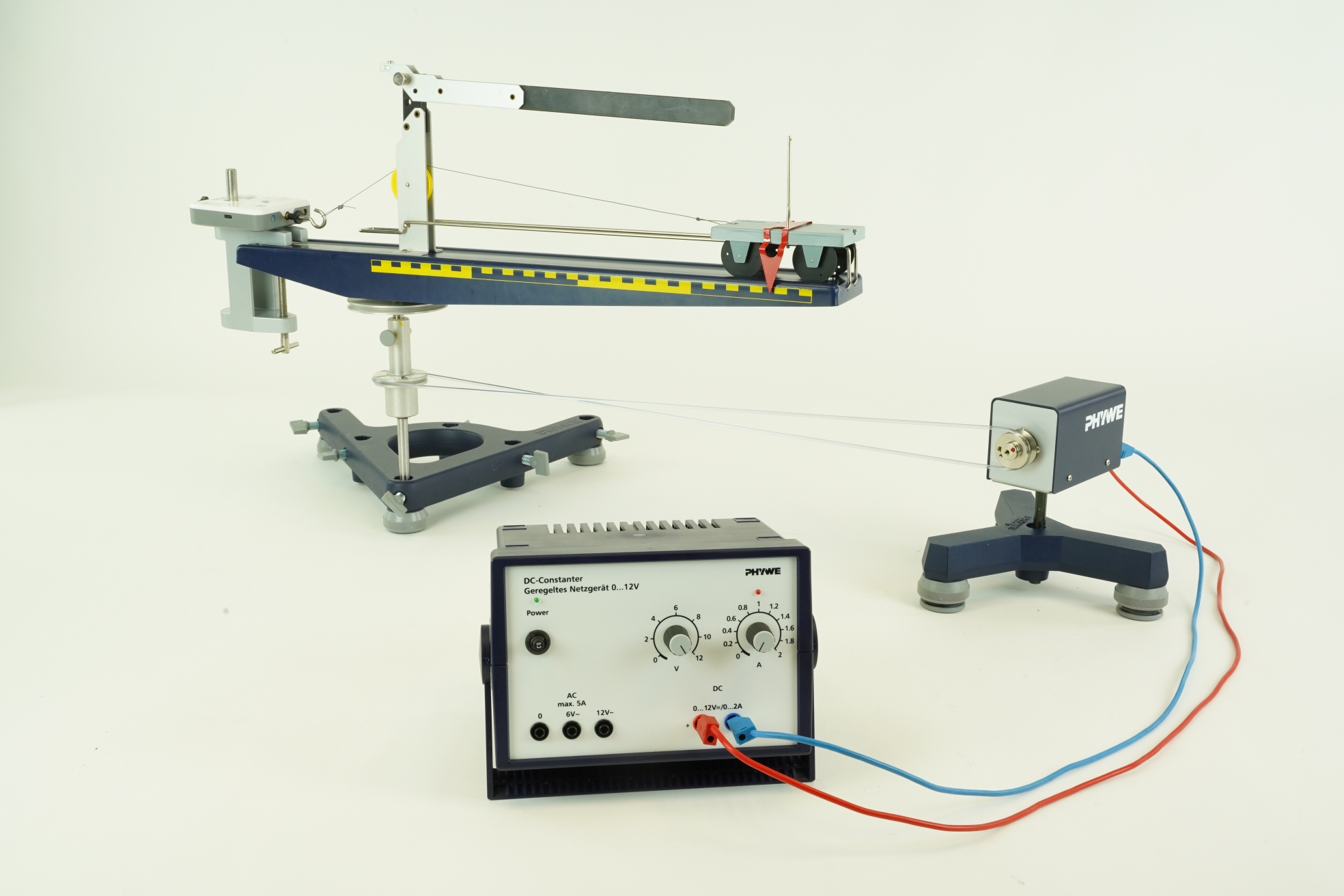Principle
The examination of the dependencies of the centripetal force is a classic experiment of mechanics. Here and in experiments with rotational movements in general radio transmission offers many advantages. Conventional set-ups of experiments to measure the centripetal force mostly measure the force through a cord to stationary measuring units outside. If a spring scale is used to measure the values, greater speed also increases the radius of the path due to the increasing elongation of the spring. Therefore, the examination of the centripetal force with altered radii or angular speeds while setting the other quantity to a fixed value is rather complicated to perform. The Cobra SMARTsense Sensor-Unit Force with elongation measurement strips simplifies this experiment. Radio transmission additionally simplifies the set-up of this experiment, since an external fixation of the sensor is not necessary as can be seen in figure 1. So it is easy to examine the dependencies of the centripetal force on angular velocity, radius and mass.
Learning objectives
- Determination of the relation between centripetal force and angular velocity
- Determination of the relation beween centripetal force and rotating mass
- Determination of the relation between centripetal force and radius of the circular movement
Benefits
- Wireless connection with Cobra SMARTsense Force & Acceleration
- Automatic sensor identification and loadable pre-settings with the software measureApp
-
High precision allows to determine the rotational frequency
-
Variable adjustment of the rotational velocity
-
Set-up optionally provides the possibility to perform the classical variant of the experiment with an analogue spring balance

